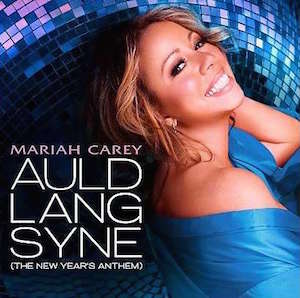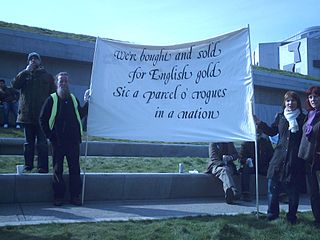 W
W"Auld Lang Syne" is a popular song, particularly in the English-speaking world. Traditionally it is sung to bid farewell to the old year at the stroke of midnight on New Year's Eve. By extension, it is also often heard at funerals, graduations, and as a farewell or ending to other occasions; for instance many branches of the Scouting movement use it to close jamborees and other functions.
 W
W"Auld Lang Syne " is a song by American singer and songwriter Mariah Carey from her second Christmas album/thirteenth studio album, Merry Christmas II You (2010). The second single from the album, an extended play consisting of nine remixes was released by Island on December 14, 2010. Using the public domain poem "Auld Lang Syne" by Robert Burns, Carey along with Randy Jackson and Johnny "Sev" Severin composed a new arrangement, added lyrics and re-titled it. The track garnered a negative response from critics, all of whom disliked how Carey had re-composed the poem into a house song. An accompanying music video was released featuring a pregnant Carey singing in front of a background of exploding fireworks. "Auld Lang Syne " charted on the lower regions of the South Korean international singles charts and at number nine on the US Holiday Digital Songs chart.
 W
W"The Birks of Aberfeldy" is a song lyric written for a pre-existing melody in 1787 by Robert Burns. He was inspired to write it by the Falls of Moness and the birch trees of Aberfeldy during a tour of the Scottish Highlands with his friend William Nicol.
 W
W"Ca' the yowes to the knowes" is a Scottish folk song collected by Robert Burns from 1794. Although sometimes attributed to Burns himself, the seven-stanza original poem is thought to be the work of Ayrshire poet Isabel Pagan, a contemporary of Burns. The poem was partially revised by Burns, and he added an eighth stanza. Burns later re-wrote the poem on a solitary stroll in the country, and this second version consists of six stanzas. It is possible that Burns was not aware that Pagan was the original author, only noting that "this song is in the true Scottish taste, yet I do not know that either air or words were ever in print before."
 W
WHighland Mary is a song composed in 1792 by Scottish poet Robert Burns. It is one of three works dedicated to Mary Campbell, with whom Burns was in love in the 1780s. The others, "Highland Lassie, O" and "Will Ye Go to the Indies My Mary?", were composed in 1786. "Highland Mary" consists of four stanzas that speak of Burns's affection for the lady, his melancholy at her death and his continued memory of her. The melody was that of "Katherine Ogie."
 W
W"A Man's a Man for A' That", also known as "Is There for Honest Poverty" or "For a' That and a' That", is a 1795 song by Robert Burns, written in Scots and English, famous for its expression of egalitarian ideas of society, which may be seen as expressing the ideas of republicanism that arose in the 18th century.
 W
W"Such a Parcel of Rogues in a Nation" is a Scottish folk song whose lyrics are taken from a poem written by Robert Burns in 1791, listed as number 5516 in the Roud Folk Song Index. It has continued to be associated with Scottish nationalism and also been referenced in other situations where politicians' actions have gone against popular opinion.